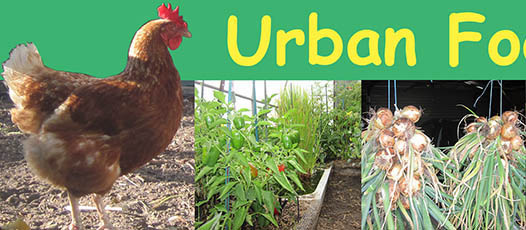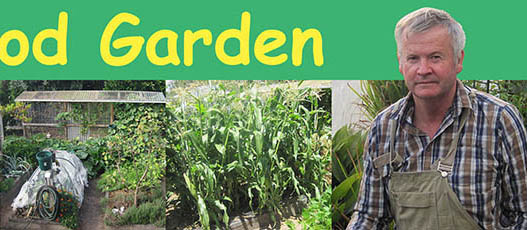chickens
chicken management
chicken food: Grains
Chickens need good nutrition if
they are to thrive and the simplest way to do this is to feed them
as varied a diet as possible. This page outlines the
different types of grains and grain mixes that I feed my chickens.
layers pellets
I use these for what I call my foundation chicken feed, that
being feed stored in an automated hopper that my chickens can
access anytime should they still be hungry after they have eaten
all the other food I have given them. That way they never go
hungry. Layers pellets are nutritionally very balanced, offering a complete diet for laying hens. They have to be balanced as it is the only food most commercial layers ever get fed throughout their egg laying lives. Layers pellets are also consistent as they are made using a specific formula. For instance the protein level will be more or less the same from batch to batch while the protein levels of wheat can vary greatly.
One significant advantage of layers pellets is that sparrows seem to avoid eating them or at worst will only eat them as a last resort. This is probably because the pellets are too large for their mouths as sparrows will readily eat chick crumble and growers pellets, both of which are smaller than layers pellets.
advantages/disadvantages summary
Advantages
- Nutritionally very balanced and consistent in terms of protein levels.
- Sparrows don't like eating them.
- While more expensive than wheat, considering their nutritional value is higher than wheat they represent good value for money.
Disadvantages
- If given an option chickens will prefer other food over layers pellets.
- Not recommended for young growing chickens as the protein level is too low.
mixed grain
Mixed grain is just as it says, a variety of grains mixed together. The grains
used vary depending on the brand but usually contain wheat, sorghum,
lupins, corn and sunflower seeds. Small
amounts of lucerne chaff is often added and some brands mix in a
quantity
of layers pellets. However the bulk of the grain in mixed grain is
usually wheat. While I have used a number of different mixed grain brands over the years the one I normally use is Peters Free Range Poultry Mix. For more information on their product click HERE.
When compared to layers pellets and wheat it is quite expensive, so I only feed it to them in small amounts, usually about one to two cups a day for six chickens. While they don't get as excided as they do when I feed them food scraps they generally eat mixed grain with gusto.
advantages/disadvantages summary
Advantages
- Chickens really like it.
- Balanced natural diet.
Disadvantages
- Quite expensive.
- If the maize seeds are too large the chickens are reluctant to eat them.
- While I am sure the grain ratios are consistent the quality of the grains is not, resulting in variations in the batches.
- Sparrows like to eat it.
- Not suitable for automatic feed hoppers as the chickens tend to pick out their favourite grains first, in the process the less favoured grains are often spilt on the ground for the sparrows to pick up.
Sunflower seeds
Chickens love sunflower seeds and will almost always go for it first
when given a choice of grains. But of all the different types of
grains available sunflowers are the most expensive, which explains why
there are so few in a bag of mixed grain. For that reason I have a bag
of it on hand to boost the mixed grain mix. But note that sunflower seeds should not be fed to chickens in large quantities as it can be bad for the health of a variety of birds, they are strictly a treat seed.
advantages/disadvantages summary
Advantages
- Chickens really like sunflower seeds.
Disadvantages
- Very expensive.
- Can cause dietary problems when fed in large quantities.
wheat grain
While relatively cheap to buy wheat grain has some
disadvantages. The main being is that it is usually poor quality feed
stock grain which can be very low in protein.
Chickens fed a diet that is too low in protein will lay fewer
eggs. Sparrows will readily eat it, which means it needs to be
kept in a sparrow proof feeder. I don't always have wheat
grain on hand but when I do it is usually used to dilute the mixed grain
mix.
advantages/disadvantages summary
Advantages
- Cheaper than most other grains or grain mixes.
Disadvantages
- Protein levels can vary greatly.
- Sparrows like to eat it.
other grains
Of course
there are other types
of grains on the market, but as I have
never tried them I feel I cannot comment on their relative merits.
Though I do recommend experimenting with different types of grains,
especially if they are cheap and plentiful in your area.I feed the grains I use directly to my chickens, however they can also be fed to them in the form of a cooked mash, adding ingredients like meat meal to raise protein levels. Other foodstuffs such as potatoes and milk also make good ingredients for a chicken feed mash. While years ago I briefly experimented with chicken feed mashes I discarded it as a feeding option as I found it too messy and time consuming to prepare.
However if you have access to plenty of fresh milk or potatoes then it might be worth your while trying feeding your chickens with a mash.





